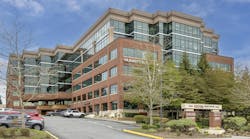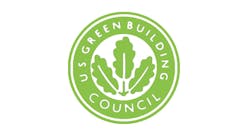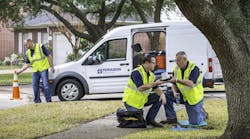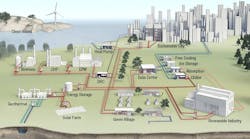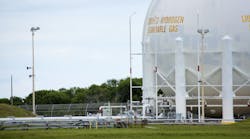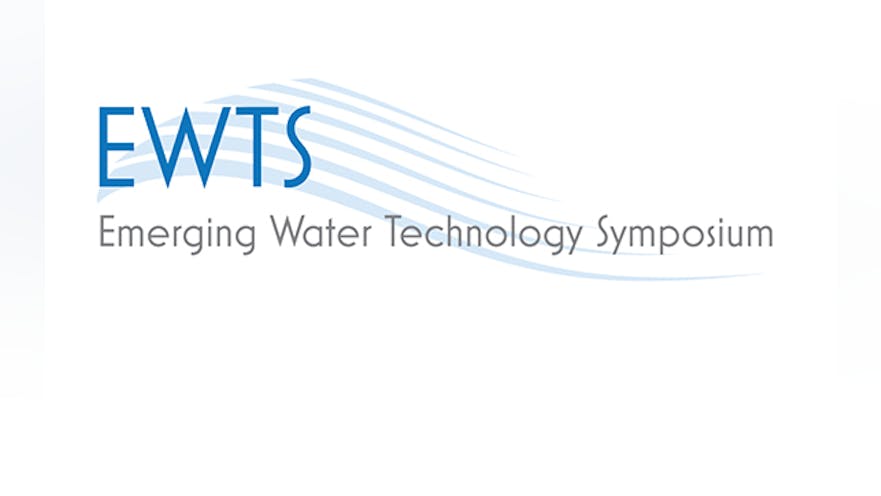ONTARIO, CA -- The 6th Emerging Water Technologies Symposium was held May 15-16, bringing together industry leaders, entrepreneurs, experts and researchers from around the world to discuss challenges facing the water industry.
The Symposium is co-convened by the International Association of Plumbing and Mechanical Officials (IAPMO), the Alliance for Water Efficiency (AWE), Plumbing Manufacturers International (PMI), and the American Society of Plumbing Engineers (ASPE), and presented in cooperation with the World Plumbing Council, and with the help of numerous media and industry partners (including informa, this publication’s parent company).
IAPMO CEO Russ Chaney opened the Symposium, expressed his thanks to the co-convening partner organizations, and all the attendees. He was followed to the podium by Kerry Stackpole (CEO/Executive Director of Plumbing Manufacturers International), Billy Smith (Executive Director/CEO for the American Society of Plumbing Engineers), and Mary Ann Dickinson (President/CEO of the Alliance for Water Efficiency), who outlined, each in different ways, the Symposiums two running themes: the continued need for greater water efficiencies, and the ongoing threat of water-borne pathogens.
Stackpole said, “40 out of 50 water managers in the U.S. expect water shortages in their state… Your efforts here today make a huge difference.”
Billy Smith saw the Symposium as an opportunity to reach out to the next generation of water industry professionals. “We all need to work together to bring young adults into the industry,” he said.
Mary Ann Dickenson expressed that the challenge of the coming decades would be, “The intersection of water efficiency and water quality,” and that for solutions to be adopted they would need to be cost-effective.
Keynote
Dr. Peter Williams, an independent consultant who has played a major role in the development and delivery of IBM’s smart cities, water management and resilience solutions gave the keynote address.
In his speech Dr. Williams discussed three emerging technology trends -- IoT, Big Data and Artificial Intelligence -- and the four industrial and social transformations he believes they will produce.
First, large scales are becoming small scales; that is, the data can be chopped ever finer as we move towards continuous, real-time measurement of water and energy usage.
Second, stand-alone systems are becoming integrated. More and more systems are leveraging connectivity to improve performance. For an example, he citied energy utilities with their demand response.
Third, reactive is becoming proactive. Instead of identifying the problem and fixing it, the new model will be predictive maintenance; fixing the problem before it ever happens.
And fourth, analytic will become self-learning. Most people when they refer to Artificial Intelligence are simply talking about analytics. True A.I. will incorporate structured and unstructured data -- both what operators deliberately feed it, and what it can interpolate from raw sensor data. True A.I. will be able to detect patterns and issues that would escape a human being.
(Click here for more complete coverage of Dr. Williams' keynote speech.)
Presentations
Following are just a few highlights from the many presentations offered over the two days of the Symposium (with profuse apologies to presenters not included). For a full list of presenters, visit: http://www.iapmo.org/Pages/EmergingWaterTechnologySymposium.aspx
Peter Mayer, P.E., Principle WaterDM, discussed water demand trends, efficiency and the future of urban water use. He said that accurate prediction of future demand is critical, and “We are doing a terrible job.”
The U.S. hit peak water demand in the 1980s and it has been falling – on a per-capita basis – ever since. He credited most of the gains in efficiency to WaterSense and code changes, but insisted there were huge efficiencies yet to be gained, mostly through the use of high-efficiency fixtures, and leak detection via advanced metering.
Bill Hoffman, President, H.W. Hoffman and Associates gave an opening remark that got the crowd’s attention, “The bad news is that you will probably be drinking your own effluent at some point in the next decade, and it may still not be enough.”
Hoffman drew comparisons between the energy industry and the water industry, noting how easy it is to do an energy audit, but how difficult it is to perform an effective water audit. Part of the difficulty, he said, came from finding a meaningful measurement of water use. Sq. ft. is insufficient, and simple water use per person won’t work in seasonal institutions such as schools.
Professor Steven Buchberger, PhD., P.E., from the University of Cincinnati discussed the first statistically based update to Hunter’s Curve sine the 1940’s. This new approach to pipe sizing, which takes today’s more efficient plumbing fixtures and appliances into account, will improve the water and energy efficiency of every building that is designed using the new method. It will also reduce water residency time in premise plumbing systems, which will help to improve water quality and mitigate breakouts from opportunistic pathogens.
The Australian contingent included Brett Lovett (Sr. Manager, Stakeholder Engagement, Standards Australia), Carol Grossman, PhD. (Director, Water Efficiency Labeling and Standards for the Australian Department of Agriculture and Water Resources), and Yvonne Orgill (CEO, Bathroom Manufacturers Association). They engaged in a lively discussion on the ISO Water Efficiency Standard, and were joined at the podium by Veronica Battle, WaterSense Program Manager for the EPA, to provide perspective from the American experience.
Some parts of Australia have been in drought for more than a decade, which has given them a unique perspective on water efficiency techniques and standards, and led them towards a leadership position in the fight to develop an international standard. They believe such a standard will need to be able to give each country adopting it the flexibility to suit their own issues and demographics.
The United Association of Plumbers, Fitters, Welders and Service Technicians' brought their new Sustainable Technologies Demonstration Training Trailer to the 6th EWTS. One of the UA's fleet of training trailers, it is designed to highlight the green systems and green skills that are a part of the UA's journeyworker and apprentice training. The trailer displayed an assortment of green plumbing fixtures, all installed behind plexiglass panels for easy examination. The trailer also included a combined DHW and space heating system, powered by examples of geothermal heat pump and solar technology.
Dr. Joseph A. Cortruvo, PhD, BCES, President of Joseph Cortruvo & Assoc. LLC, offered a review of the Legionella 2018 Management Conference findings. In the past decade, 60 percent of outbreaks of water-borne illnesses were legionellosis, according to the CDC, and that is true for much of the developed world. Citing, “The law of unintended consequences,” he describes it as a disease born of the advances in civilized living.
Thomas Kistemann, M.D., of the Institute for Hygiene & Public Health, Bonn University (Germany), spoke on preventing pathogens by controlling conditions inherent in plumbing systems. Such systems need to be understood as their own ecosystems. He referred back to Steven Buchberger’s work with Hunter’s Curve, and said that smaller pipes will save material, save water as well as reduce the opportunity for pathogen growth.
William F. McCoy, PhD., Chief Technology Officer and Co-Founder, Philgenics, LLC discussed advances in molecular marker negative screening for validation of legionella control in the built environment. Polymerase Chain Reaction or PCR is a molecular biology technique to analyze samples at a genetic level and attain rapid, comprehensive results.
Jocelyn Lu, Senior Staff Engineer, Brown and Caldwell, speaking on behalf of California Urban Water Agencies, spoke about the impacts declining flows can have on the interconnected urban water cycle, and how they can be managed. At the heart of her research is a comprehensive survey that got a good range of data from small and large California water utilities, and led to a series of one-on-one interviews.
A great end note to the Symposium was a group of young inventors, the Robo-Rebels of Suzanne Middle School in Walnut, California. As part of the First Lego League robotics challenge, they developed the Pressure Potty water saving sensor, an automatic shut-off to prevent the water sometimes wasted by motion-detecting flush actuators. The Rebels gave a video presentation, a live demonstration of their prototype, and answered questions from the moderator and the audience.


